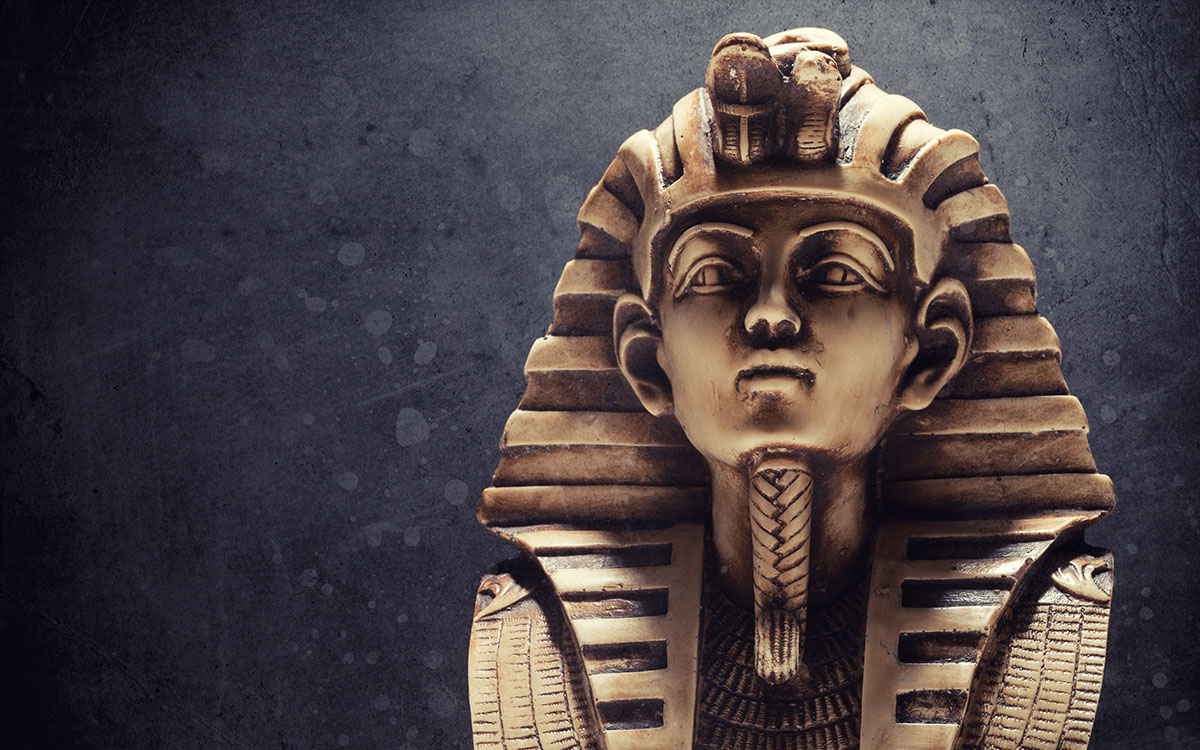king tut gives us a peek at a royal family

Just because the famous boy king is dead doesn’t mean he can’t tell us what the life of Ancient Egyptian royal families. A recent study of his DNA and that of his suspected relatives provides evidence that he really was the son of the heretic king Akhenaten and a yet unknown sibling of the pharaoh. It also shows that Tut suffered from a club foot, eventually contracted malaria and was quite frail overall, making a ruling on his exact cause of death very difficult to determine. Maybe the popular conspiracy theories in which Tutankhamun was killed by his scheming vizier who ascended to the throne after the boy king’s death aren’t needed here. Maybe, a more probable scenario is that the young pharaoh’s death created a power vacuum in a fragile kingdom. While Tut is an established rock star of the mummy world, his reign as a mortal was a lot rougher than his afterlife…
For those of you who may not remember, Akhenaten’s regime challenged the Egyptian priesthood with a new, monotheistic religion build around the sun disk, Aten. Since the priests who still worshipped the old gods had a great deal of money and power in their position on the government’s food chain, the introduction of just one deity with the pharaoh as its only high priest was a major blow to their finances and influence. And since most of the empire’s gods have been around for thousands of years before Akhenaten’s new religion, the Aten was seen as a false god.
Trying to enforce his will across the empire only got Tut’s father so far and soon after his death, the priesthood reinstated the old religion and tried to expunge the heretic pharaoh’s name from history. This is where Tutankhamun comes into the picture. His role was to reunite the empire under the guidance of the high priests and powerful bureaucrats. Even his name is a consequence of political censorship. You see, Tut was born as Tutankhaten, which means “in the living image of Aten” and unacceptable to the priests who were to oversee his coronation. Hence the reference to the false god Aten was replaced with one to the major old god Amun, creating the name Tutankhamun.
If you think the circumstances leading to his coronation were a mess, his family life was also very unusual by our standards. A typical pharaoh’s family tree looks more like a wreath according to ancient records, and the boy king’s lineage doesn’t seem to be an exception. As noted above, his mother was either his dad’s sister or half-sister, perhaps his beloved wife Kiya. Tut married his half-sister. In fact, there was so much inbreeding in his family that it’s a challenge to tell individuals apart and while researchers know the mummy of his mother, that mummy might not be that of Kiya, but the famous queen Nefertiti who is thought to be the daughter of Ay, the Grand Vizier who would advise Tutankhamun and quite frequently named as the boy king’s murderer in a number of conspiracy theories regarding his rise to power after Tut’s death.
The web of intermarriages along with the tradition of marrying royal siblings to keep the bloodline going, made family life very complicated for a king in Ancient Egypt. It also created the potential for major disabilities in future generations since inbreeding amplifies genetic problems as they’re passed on again and again without being diluted by new genes which come from another gene pool. After all, the whole point of sexual reproduction is to spread genes around.
Unlike we’d expect though, Tut didn’t seem to suffer from strictly genetic defects and his conditions were likely acquired. From the Köhler disease which would’ve made it painful for him to walk and killed off bone tissue in his left foot, to a malaria parasite, the child pharaoh would’ve been frail and a serious fracture he received just prior to his death combined with a potential immunosuppressive syndrome could have killed him at the age of nineteen. All in all, not exactly a good life for a historical figure whose name is so famous today.
Used as a puppet for priests regaining their power after the exploits of his tyrannical father, suffering from a painful bone disease and malaria, unable to produce an heir, felled by a fractured leg and his innate frailty, quickly buried in a small tomb with his death treated like an end of a shameful chapter in ancient history, and then exhumed by Victorian treasure hunters who treated his body with the tenderness of a butcher, this pharaoh definitely got a rough deal. Maybe it’s some sort of symbolic justice that thousands of years after his sudden death and rapid plunge into obscurity, he’s an international celebrity along with some of the titans of Ancient Egypt…





